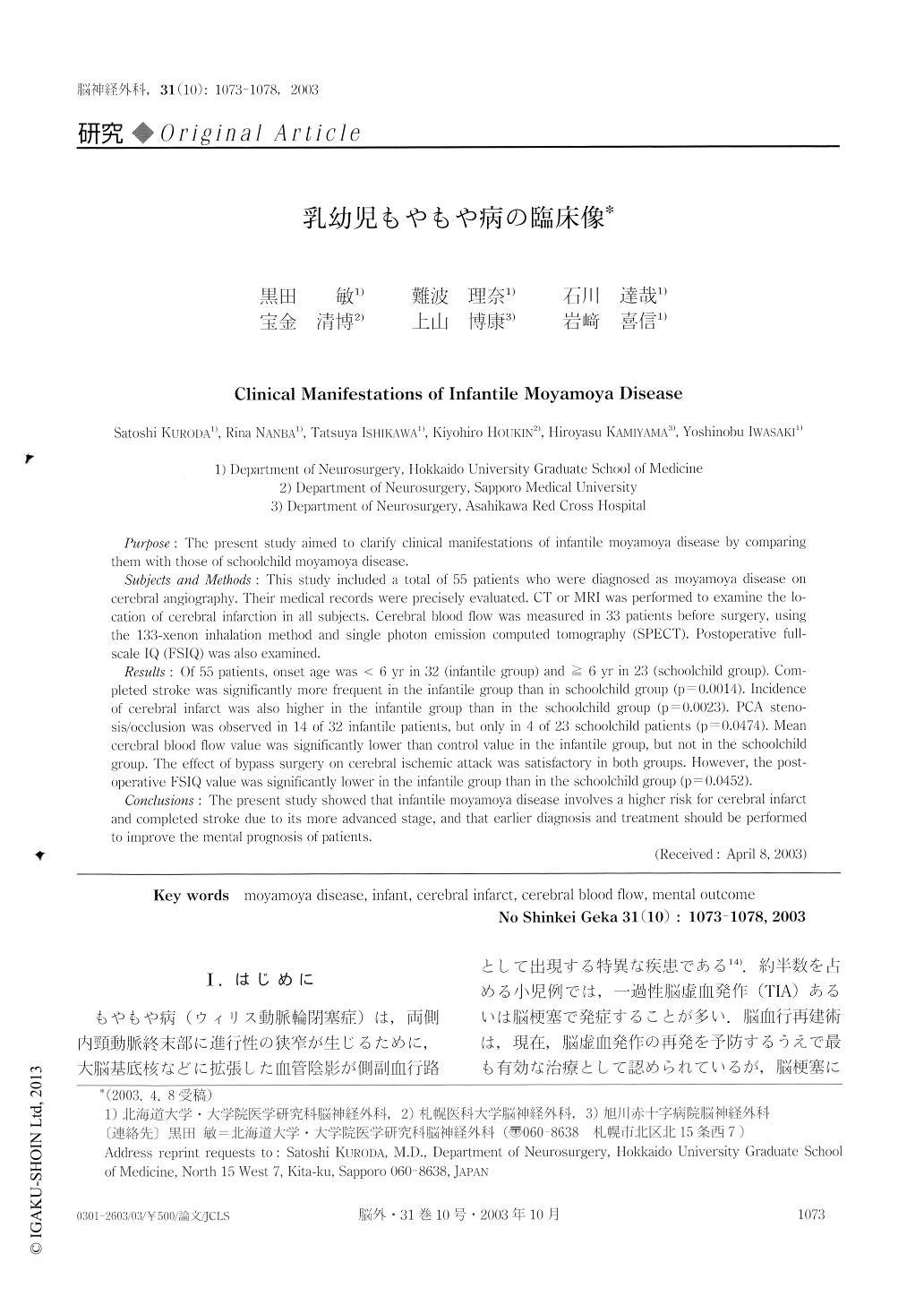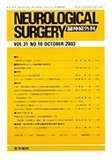Japanese
English
- 有料閲覧
- Abstract 文献概要
- 1ページ目 Look Inside
Ⅰ.はじめに
もやもや病(ウィリス動脈輪閉塞症)は,両側内頸動脈終末部に進行性の狭窄が生じるために,大脳基底核などに拡張した血管陰影が側副血行路として出現する特異な疾患である14).約半数を占める小児例では,一過性脳虚血発作(TIA)あるいは脳梗塞で発症することが多い.脳血行再建術は,現在,脳虚血発作の再発を予防するうえで最も有効な治療として認められているが,脳梗塞に伴う運動機能や知能予後の悪化を防ぐためには,早期の診断・治療が重要とされている1,3,6,8,9,10).
これまでも経験的に,乳幼児期に発症した場合,学童期に発症した場合よりも機能予後が不良であることは知られていたが,その臨床像を詳細に解析した報告は少ない3,8,10).今回,われわれは,就学以前に発症した乳幼児もやもや病の臨床像を,就学以降に発症した学童もやもや病のそれと比較したので報告する.
Purpose : The present study aimed to clarify clinical manifestations of infantile moyamoya disease by comparing them with those of schoolchild moyamoya disease.
Subjects and Methods : This study included a total of 55 patients who were diagnosed as moyamoya disease on cerebral angiography. Their medical records were precisely evaluated. CT or MRI was performed to examine the lo-cation of cerebral infarction in all subjects. Cerebral blood flow was measured in 33 patients before surgery, using the 133-xenon inhalation method and single photon emission computed tomography (SPECT).

Copyright © 2003, Igaku-Shoin Ltd. All rights reserved.


